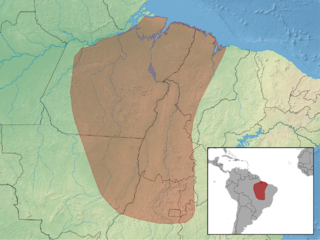The short-tailed spiny-rat or Huallaga spiny rat, is a spiny rat species found in Bolivia, Brazil, Colombia, Ecuador and Peru.

The Guyenne spiny-rat or Cayenne spiny rat, is a spiny rat species found in Brazil, Colombia, French Guiana, Guyana, Suriname and Venezuela.
Cuvier's spiny-rat is a spiny rat species found in Brazil, French Guiana, Guyana, Peru and Suriname.
The stiff-spine spiny-rat or Tefe spiny rat, is a spiny rat species found in Brazil and Colombia.
Gardner's spiny-rat is a spiny rat species found in Bolivia and Brazil.
Goeldi's spiny-rat is a spiny rat species found in Brazil.
The Guyanan spiny-rat is a spiny rat species found in Brazil, Guyana and Venezuela. The species was first described by George Henry Hamilton Tate in 1939.
The Kulina spiny-rat or Javari spiny rat, is a spiny rat species found in Brazil and Peru.

The long-tailed spiny rat is a spiny rat species found in Bolivia, Brazil and Paraguay.

Robert's spiny-rat or Para spiny rat, is a spiny rat species found in Brazil. This species is named after the collector Alphonso Robert, who collected the holotype of this species in 1901.
Patton's spiny-rat is a spiny rat species found in Brazil and Peru.

The Napo spiny rat is a spiny rat species found in Brazil, Colombia, Ecuador, Peru and Venezuela.

Simons's spiny rat is a spiny rat species found in Bolivia, Brazil, Colombia, Ecuador and Peru. It was named for American scientific collector Perry O. Simons.

Steere's spiny rat is a spiny rat species found in Bolivia, Brazil and Peru.

Proechimys is a genus of South American spiny rats of the family Echimyidae. All species of the genus are terrestrial. In the lowland Neotropical forests, Proechimys rodents are often the most abundant non-volant mammals. They are recognizable by reason of their elongated heads and long rostra, large and erect ears, narrow and long hind feet, and tails always shorter than head-and-body lengths. The dorsal pelage comprises a mixture of expanded, varyingly stiffened spines — hence the vernacular name of spiny rats — and soft hairs.
The Colombian spiny-rat is a species of rodent in the family Echimyidae. It is found in Colombia and Venezuela.
The Boyacá spiny rat is a species of rodent in the family Echimyidae. It is endemic to Colombia; it is found primary forest in Carare River valley, Boyacá Department, 100 to 500 meters above sea level. Nocturnal, terrestrial and solitary, it feeds on seeds, fruit and some leaves and insects. It is threatened by habitat loss for mining and agriculture.
The Pacific spiny rat is a species of rodent in the family Echimyidae. It is found in Ecuador and Peru.
The Minca spiny rat is a species of rodent in the family Echimyidae. It is endemic to Colombia.
O'Connell's spiny-rat is a species of rodent in the family Echimyidae. It is endemic to Colombia.







